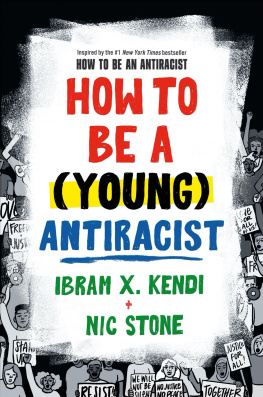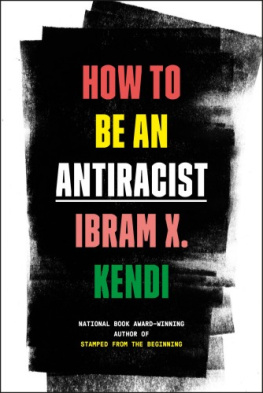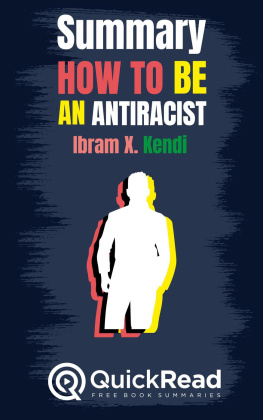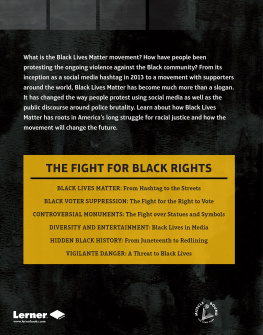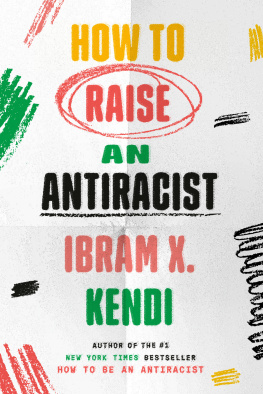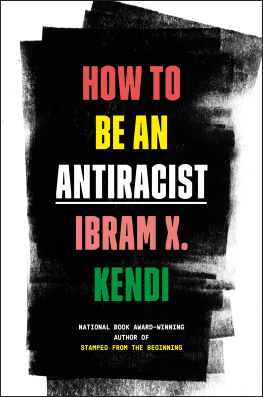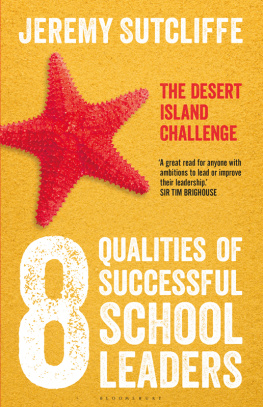Praise for Black Lives Matter at School
The educators, students, and community activists whose stories are documented here are fighting for a transformative vision of what public schools can be, and the grassroots efforts we will need to get there. Black Lives Matter at School is an essential resource for all those seeking to build an antiracist school system.
Ibram X. Kendi, National Book Awardwinner
and #1 New York Times bestselling author
We need this book right now. The shadow-loving fungus of white supremacy wont continue to send its spores to infect our children if we act now to bring the curative light of antiracist knowledge, compassion, and justice into their lives. Built upon the Black Lives Matter at School organizations Week of Action, this volume provides the adults in our educational institutions with inspiration, organizing principles, strategies, and examples to take bold action against anti-Blackness. The authorsvisionary educators of what is possiblecall on all of us to radically reshape learning environments to make them safe, supportive, and transformative for all students (and teachers). Please read ASAP!
Lisa Delpit, executive director of the Center for Urban Education
and Innovation at Florida International University
This book makes the strong case for why we need to elevate Black lives and people in our curriculum and pedagogy year-round. This book serves as a blueprint for achieving this honorable goal.
Jos Luis Vilson, author, This Is Not A Test,
A New Narrative on Race, Class, and Education
Toni Morrison reminds us: If you cant imagine it, you cant have it. This book helps us to imagine Black lives mattering in schools. With accounts from teachers across the country doing the work, along with student interviews, poems, posters, and historical background, this is a primer for antiracist educators to see the way forward in terms of reshaping school curriculum, diversifying teacher hiring, and transforming school discipline.
Jeanne Theoharis, author, A More Beautiful and Terrible History:
The Uses and Misuses of Civil Rights History
There is no easy way to talk about the complexities of race facing our school system in Americabut we have to talk about it if we are ever going to achieve the schools our children deserve. The Black Lives Matter at School movement has been disrupting the complacency of those who, for too long, have been comfortable not having these conversations about the impact of racism in the schools. Black Lives Matter at School is a playbook for undoing institutional racism in the education system.
Michael Bennett, NFL defensive lineman, Super Bowl champion,
and author, Things That Make White People Uncomfortable
This book asserts that we are at a critical moment in time, where the racial uprisings emphasize the absolute need to transform education and its foundational practices. Black Lives Matter is a movement sweeping the globe and affirming that our babies lives matter. Its time for educators to be bold, standing up for our students and communities. Our students are looking to us to lead the fight against injustice and dismantle systemic racism as we aspire to realize the schools our students deserve.
Cecily Myart-Cruz, UTLA president, NEA Black Caucus chair
Black Lives Matter at School centers the humanity of our children. It is a sharp rebuke of white supremacythe very thing that interrupts the healthy development of Black youth. School communities must affirm Black lives. Educators have to dismantle systems of oppressionsystems that we influence daily. We have to be radically different from the missionary educators depicted in popular culture. Black Lives Matter at School is essential. Period.
Stacy Davis Gates, Chicago Teachers Union vice president
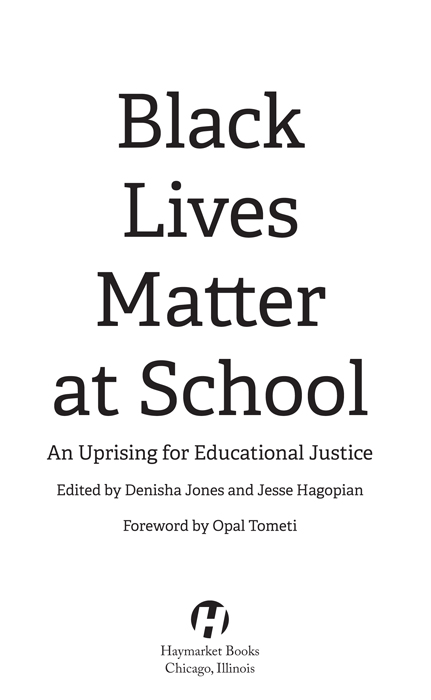
2020 Denisha Jones and Jesse Hagopian
Published in 2020 by
Haymarket Books
P.O. Box 180165
Chicago, IL 60618
773-583-7884
www.haymarketbooks.org
ISBN: 978-1-64259-389-1
Distributed to the trade in the US through Consortium Book Sales and Distribution (www.cbsd.com) and internationally through Ingram Publisher Services International (www.ingramcontent.com).
This book was published with the generous support of Lannan Foundation and Wallace Action Fund.
Special discounts are available for bulk purchases by organizations and institutions. Please call 773-583-7884 or email for more information.
Cover artwork from Rise, 2020, by Ferrari Sheppard. Cover design by Rachel Cohen.
Library of Congress Cataloging-in-Publication data is available.

To the Black children of the future who will one day all be
taught the epic story of how Black people finally got free,
and who will grow up knowing that their lives matter at
schooland everywhere else.
Foreword
By Opal Tometi
Nearly every day in the United States we are bombarded with news stories illustrating the hardships that Black children face in their schools. Whether the headline is about a six-year-old girl being arrested by the police, a high school senior ineligible to graduate because of his hairstyle, or an eleven-year-old girl being assaulted by a school resource officer, the stories are outrageous, but their impact on the lives of Black students is real. Today, 1.7 million US children go to a school where a police officer stands guard yet no counselor is on staffand some fourteen million students attend a school with a police officer and no counselor, nurse, psychologist, or social worker. It cannot be overstated: the United States is in the midst of an urgent moral and legal crisis over the safety, liberty, and well-being of Black young people.
As I write the foreword for this important and necessary book, I cant help but feel intimately committed to this projects central thesis. The issues this book grapples with are personal for me. They were the very concerns that led me, along with Alicia Garza and Patrisse Khan-Cullors, to found Black Lives Matter. As an educator, Ive walked the halls of many campuses, and Ive heard the concerns of students, parents, and teachers. And it feels like just yesterday that I, too, was a young person in school. The classroom was the site of my own formative understanding of my own value in the world and my sense of what was possible for me, a person of color. In fact, it was in school that I first became aware that some people took issue with my skin color.
I was in the first grade at my school in suburban Arizona and recess had just ended. Our teacher called our class to come inside, and some friends and I were scurrying to join the line of twenty or so first graders. I stumbled over a friend and accidentally kicked a boys shoe. He looked at me and sneered, Nigger. I had never heard the word before, nor did I have a clue what it meant. However, young Opal knew from his tone and stare that the word wasnt anything good. And in my bewildermentmixed with shame at my failure to understand his outrage and why he had used this unique name for me and not the other girlsI knew intuitively that I couldnt share what had happened with my teacher. Thankfully, my parents overheard me telling my younger brother about the incident, and they took a stand for me. The very next day, they went to my classroom to discuss the episode with the teacher. While I never again heard that terrible work spoken in my class, I went on to have many other encounters over the years that left me feeling devalued and out of place. Still, it was that formative experience in first grade that helped me see that if we experience or witness injustice, we can speak up and change it.
Next page

